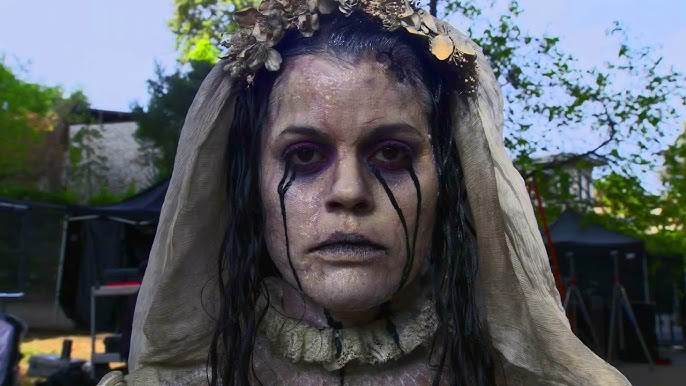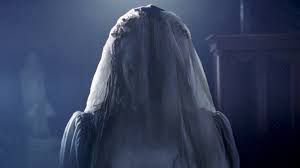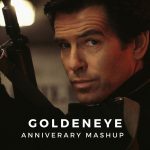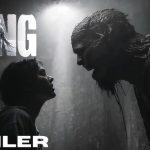🎬 The Curse of La Llorona (2019)

The Curse of La Llorona (2019) – A Haunting Tale from the Conjuring Universe
Introduction
Horror films based on folklore and urban legends often carry a deeper, more psychological fear rooted in cultural history. The Curse of La Llorona (2019), directed by Michael Chaves, attempts to bring the terrifying legend of La Llorona—the Weeping Woman—to the big screen. As a loosely connected entry in The Conjuring universe, this supernatural horror film blends Latin American mythology with the franchise’s signature eerie atmosphere. However, while it delivers jumpscares and an unsettling tone, it falls short in developing a truly terrifying narrative.
Starring Linda Cardellini as Anna Tate-Garcia, Raymond Cruz as Rafael Olvera, and Marisol Ramirez as the vengeful La Llorona, the film tells the story of a widowed social worker in 1970s Los Angeles who must protect her children from an ancient evil. The legend of La Llorona, deeply rooted in Mexican folklore, speaks of a woman who drowned her own children and now roams the earth searching for new victims. With strong performances and haunting visuals, the film attempts to do justice to this terrifying tale. But does it succeed? Let’s take an in-depth look at The Curse of La Llorona and its place within the horror genre.
Plot Summary: The Curse Unleashed
The film begins in Mexico, 1673, with a brief backstory showing La Llorona—once a beautiful woman—drowning her own children in a fit of jealousy and rage. As punishment for her sins, she is cursed to wander for eternity, crying out in despair while searching for new victims. Fast forward to 1973 Los Angeles, and we meet Anna Tate-Garcia (Linda Cardellini), a social worker and widowed mother of two. Anna is investigating the case of Patricia Alvarez (Patricia Velásquez), a distressed woman whose children are mysteriously missing. When Anna finds them locked away in a closet, she assumes abuse and takes them into protective custody—unwittingly sealing their fate. That night, La Llorona finds and kills the boys.
As Patricia grieves, she reveals a chilling truth: she prayed for La Llorona to take Anna’s children instead. Soon after, Anna’s own children, Chris and Samantha, encounter the terrifying spirit. Scratches appear on their arms, eerie whispers fill the house, and supernatural events escalate. Desperate for help, Anna turns to Father Perez (Tony Amendola), a character known from Annabelle (2014), confirming the film’s connection to The Conjuring universe. He directs her to Rafael Olvera (Raymond Cruz), a former priest-turned-shaman with unconventional methods.
Rafael performs a cleansing ritual to ward off La Llorona, leading to a tense showdown in Anna’s home. As the entity grows more aggressive, the family fights back, using a special artifact to banish her. In the climax, La Llorona is finally defeated, disappearing into the underworld. The film ends with an eerie silence, suggesting the curse may never truly be broken.

Themes: The Fear of Motherhood and the Supernatural
1. The Terrifying Burden of Motherhood
One of the most striking themes in The Curse of La Llorona is the fear and responsibility that come with motherhood. Both La Llorona and Anna represent two sides of maternal grief—one consumed by rage and regret, the other by fear and protection. La Llorona’s curse stems from the ultimate maternal sin: harming one’s own children. In contrast, Anna fights relentlessly to save hers, reinforcing the film’s core emotional struggle.
2. The Horror of Guilt and Punishment
La Llorona is a spirit fueled by guilt and eternal suffering. The film suggests that her existence is a form of self-inflicted punishment, an endless cycle of seeking redemption through tragic means. Similarly, Patricia Alvarez’s character adds another layer to this theme, as she willingly condemns Anna’s children out of despair and desperation.
3. Faith vs. Folklore
Unlike traditional Catholic exorcism films, The Curse of La Llorona incorporates shamanic cleansing rituals, merging faith with folklore. Rafael Olvera, a former priest, represents a bridge between these two worlds, using both religious relics and ancient techniques to combat evil. This approach adds a fresh perspective to the horror genre, though it could have been explored in greater depth.
Character Performances: Strong but Underutilized
1. Linda Cardellini as Anna Tate-Garcia
Linda Cardellini delivers a convincing performance as a single mother caught in a supernatural nightmare. Her portrayal balances realism with emotional depth, making her character sympathetic and relatable. However, her role follows a familiar horror movie formula—initial skepticism, gradual belief, and final confrontation—without adding much originality.
2. Raymond Cruz as Rafael Olvera
Raymond Cruz, known for his role as Tuco Salamanca in Breaking Bad, brings a refreshing change as Rafael Olvera, the film’s spiritual guide. His deadpan humor and calm demeanor contrast with the film’s eerie atmosphere, but his character is somewhat underdeveloped. Given his unique knowledge and abilities, he could have played a larger role in the film’s resolution.
3. Marisol Ramirez as La Llorona
Marisol Ramirez’s portrayal of La Llorona is undeniably haunting. Her appearance—flowing white dress, rotting face, and piercing cries—aligns with the terrifying legend. However, the film’s reliance on jump scares over psychological horror prevents her from becoming a truly iconic villain like Valak (The Nun) or Annabelle.
Cinematography and Atmosphere: Aesthetic but Predictable
Michael Chaves, who later directed The Conjuring: The Devil Made Me Do It (2021), brings a visually polished style to The Curse of La Llorona. The film features the dark, shadowy aesthetic typical of The Conjuring universe, with moments of striking imagery, such as:
- The ghostly veil: La Llorona’s flowing white veil covering her decayed face is one of the film’s most memorable visuals.
- The water motif: As a spirit tied to drowning, La Llorona is often associated with water, leading to eerie bathroom and river scenes.
- The candlelit cleansing ritual: Rafael’s ritual sequence is beautifully shot, creating a contrast between light and darkness.
However, the film relies heavily on predictable horror tropes. Many of the jump scares follow the standard formula—quiet buildup, sudden appearance, loud sound effect—making them less effective over time.
The Weak Connection to The Conjuring Universe
While The Curse of La Llorona includes Father Perez, who previously appeared in Annabelle, its connection to The Conjuring universe feels weak. Unlike The Nun (2018), which explored the origins of Valak, or Annabelle (2014), which expanded on the Warren family’s cases, The Curse of La Llorona feels more like a standalone ghost story than a crucial part of the franchise. This lack of deeper connection may have disappointed fans expecting stronger ties.
Reception: Mixed Reviews from Audiences and Critics
Upon its release, The Curse of La Llorona received mixed reviews. While praised for its performances and atmosphere, it was criticized for its reliance on predictable scares and its failure to fully explore the legend’s depth.
- Rotten Tomatoes: 28% critic score, indicating a generally unfavorable reception.
- Audience Reactions: Many horror fans enjoyed the film’s eerie visuals but felt it lacked originality compared to The Conjuring and The Nun.
- Box Office: Despite the criticism, the film grossed over $123 million worldwide on a $9 million budget, proving its commercial success.
Conclusion: A Decent Horror Flick but a Missed Opportunity
The Curse of La Llorona (2019) is a decent supernatural horror film that delivers chilling moments but fails to fully capitalize on its terrifying folklore. While Linda Cardellini’s performance and the film’s visuals add to its eerie appeal, its overuse of jump scares and weak connection to The Conjuring universe prevent it from becoming a standout entry in the franchise.












